The dark side of photography: Broomberg & Chanarin uncover uncomfortable truths

Bloomberg & Chanarin's latest exhibition has opened at Foam in Amsterdam, exploring issues of race and colour in and through the history of photography Pictured is Kodak Ektachrome 34, 1978; Frame 4, 2012 - a palm leaf shot on 1978 Kodak film © Adam Broomberg & Oliver Chanarin
In the late 1970s, the film maker Jean-Luc Godard was commissioned to film in Mozambique and advise on the creation of a new state television channel. He was offered Kodak film stock but refused to use it, insisting the film was 'racist', in that unless its chemical bias was compensated for, it rendered black faces virtually featureless. Spurred by such criticism perhaps, in the early 1980s Kodak released a new film 'to photograph the details of a dark horse in low light'. The London-based photographer duo Adam Broomberg and Oliver Chanarin have taken Kodak's odd, and strangely poetic, euphemism as the title - and Godard's ire as the starting point - of their current exhibition at the Foam gallery in Amsterdam.
Given their own commission to shoot rare initiation rituals in Gabon, the pair took medium format Kodak film stock with a 1978 expiry date. They managed to develop just one shot from the many rolls of film they shot, an underexposed palm leaf. Broomberg and Chanarin use the image to start a complex exploration of race and photography; of racially-skewed product development and faces disappeared by default settings.
Another key work in the exhibition is a scaled-up version of 'Shirley', an image of a white model which Kodak sent to photo labs in the 1950 as a benchmark for 'normal' colour balance and dynamic range (it was notoriously difficult to shoot black and white faces in the same picture using early colour film).
A series called Polaroid Revolutionary Workers Movement was shot using a salvaged version of Polaroid's ID-2 system. This was a twin-lens camera used by South Africa's apartheid regime to take the shots used in the passbooks black South Africans were forced to carry (the twin lenses meant that a straight-on portrait and profile could be shot on the same sheet of film). In 1970, Caroline Hunter, a young chemist who worked for the Polaroid Corporation in the US, formed the Polaroid Workers Revolutionary Movement to protest the company's dealings (if through a local distributor) with the apartheid regime. Seven years later, Polaroid did stop supplying the South African government.
In other Gabon images, the pair have employed darkroom equipment left by a family friend, and instructions how to use it, to create black and white test strips which illustrate the effects of various exposure times on the renderings of 'colour'. Other shots have been developed with purposeful misuse of the dodging tool, again making clear that photography is not an innocent medium in these matters.
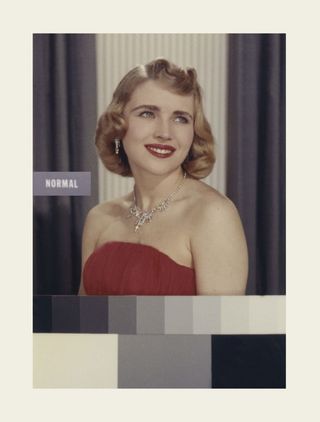
One of the works on show is a blown up versio of Kodak's white model 'Shirley' - the company's benchmark for 'normal' colour in 1950 © Adam Broomberg & Oliver Chanarin
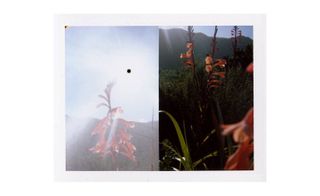
I.D.022, shot in 2013, was taken using a salvaged version of Polaroid's ID-2 twin-camera system © Adam Broomberg & Oliver Chanarin
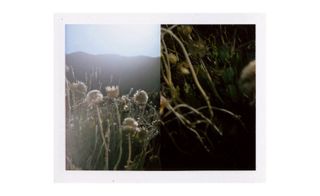
I.D.005, 2013 © Adam Broomberg & Oliver Chanarin
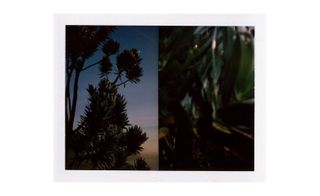
I.D.002, 2013 © Adam Broomberg & Oliver Chanarin
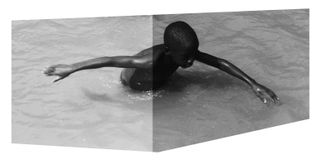
One of Broomberg and Chanarin's strip tests - Strip Test 7, 2012 © Adam Broomberg & Oliver Chanarin
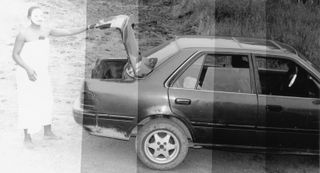
Strip Test 4, 2012 © Adam Broomberg & Oliver Chanarin
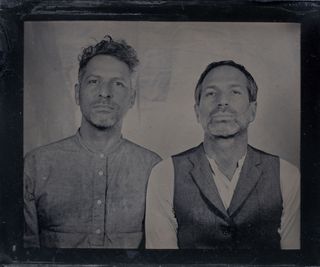
A portrait of the photographers © Basil Davidson
ADDRESS
Foam Photography Museum
Keizersgracht 609
1017 DS Amsterdam
Wallpaper* Newsletter
Receive our daily digest of inspiration, escapism and design stories from around the world direct to your inbox
-
 Morgan take their classic roadster and give it subtle but significant tweaks for 2024
Morgan take their classic roadster and give it subtle but significant tweaks for 2024New details and features give the compulsive Morgan Plus Four an even more pared back silhouette and driving ability
By Jonathan Bell Published
-
 Wallpaper* Class of '24 exhibition now open at Triennale Milano
Wallpaper* Class of '24 exhibition now open at Triennale MilanoWallpaper* Class of '24 exhibition at Triennale spotlights international emerging talent in furniture and product design, with the support of AHEC and SNOW (until 21 April 2024)
By Rosa Bertoli Published
-
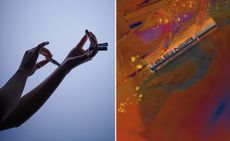 Bleu Nour is a new perfume brand bottling the sexy scent of cannabis
Bleu Nour is a new perfume brand bottling the sexy scent of cannabisBleu Nour is shaking things up in the London world of perfumery with Canna Crush, a new cannabis-based fragrance
By Mary Cleary Published